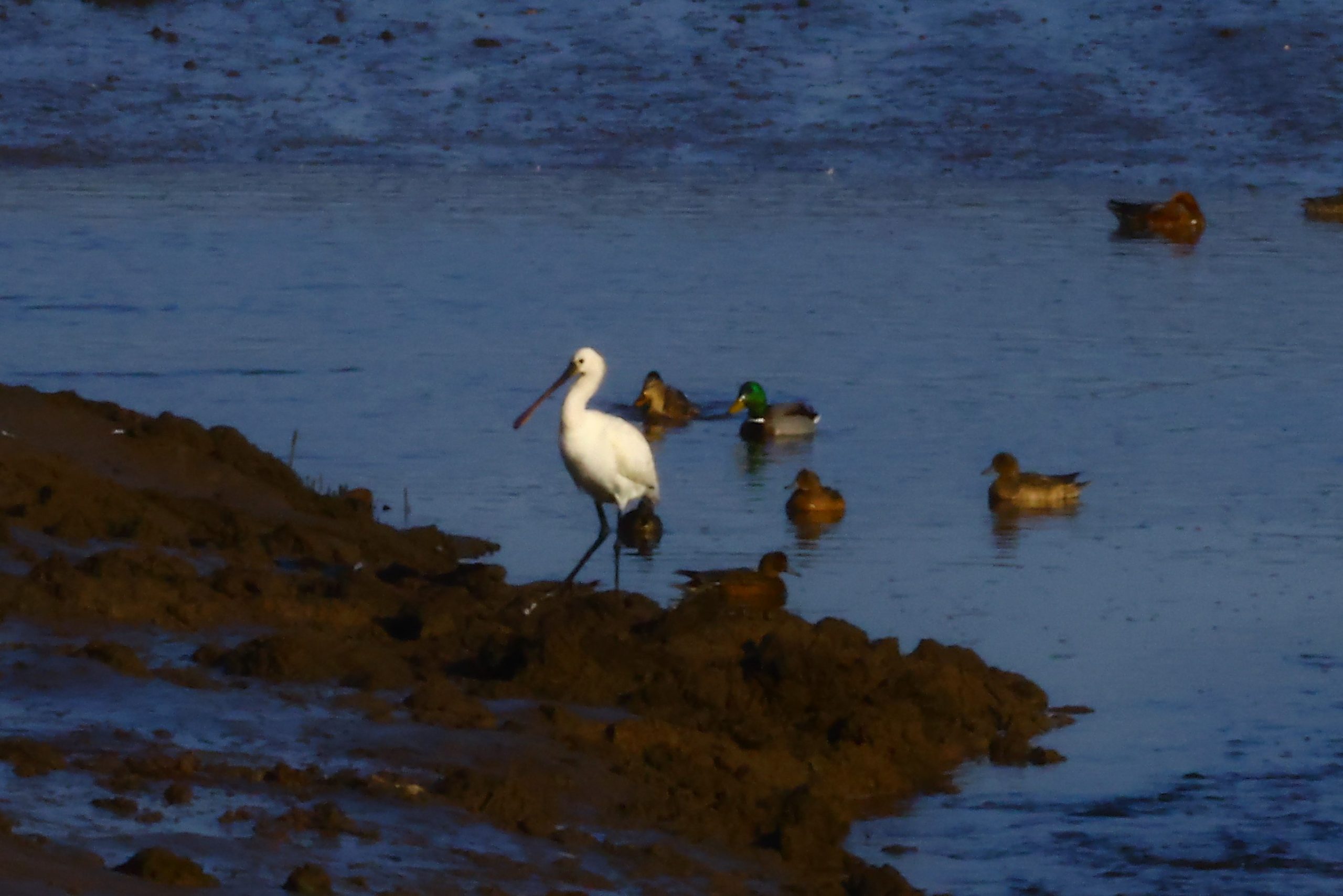
Seasonal change is always an exciting time on the coast and autumn is no exception. With the cooler weather comes spectacular aerial displays of starling murmurations, thousands of birds creating incredible shapes in the sky. They have arrived from the continent, seeking the warmer winter weather that our islands climate provides.
The Tyne to Tees coast is a fantastic place to visit during the winter months, as it is on our rocky shores, beaches and saltmarshes that you will find wintering shorebirds feeding at low tide. While we need to pull on our hats and gloves and wrap up warm, winter in the UK feels pretty balmy to the waders who nest in Scandinavia and the Arctic!
Our first winter Shorebird Walk was at Seal Sands on Sunday 6th November, where we joined with Natural England and Durham Bird Club. We saw 29 bird species, as well as the local common seals resting on the muddy banks.
We were especially lucky to see a very rare bird in the UK, a spoonbill (Platalea leucorodia), pictured, feeding in the shallow water alongside a little egret (Egretta garzetta). We also enjoyed watching a large flock of lapwing (Vanellus vanellus), as well as bar-tailed godwits (Limosa lapponica), bright-legged redshank (Tringa totanus), the beautifully speckled golden plover (Pluvialis apricaria) and the largest European wading bird, the curlew (Numenius arquata).
If you would like to see some wintering waders with us, we have a series of free guided walks with local experts taking place all along the coast during the winter months. Our next walk and talk is on Sunday 20th November, 10am – 2pm in Sunderland. Please click here for more information.
Of course, you can venture out to enjoy watching wintering birds yourself, the best time is an hour or so before high tide.
As low tide is the only time that shorebirds and waders can feed on seasnails, marine worms and other invertebrates hiding amongst seaweed, between rocks and under sand, it’s very important that we don’t disturb them. So please enjoy watching them from a distance and keep dogs on leads.
(Photo credit: Richard Cowen)


